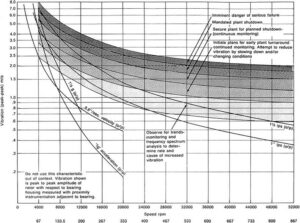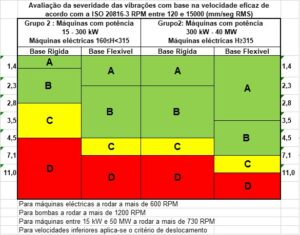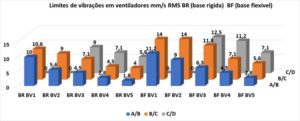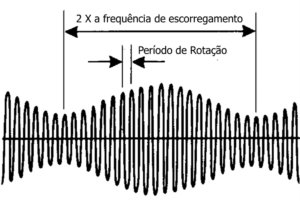Industrial ground resonance
Industrial ground resonance - introduction
This article presents how to solve a resonance problem in industrial soil, com Vibration Analysis.
The pavement of an industrial floor in a factory, along with two vibrating screens, vibrated with great amplitudes, causing nearby machines to malfunction. It was intended to eliminate these excessive vibrations.
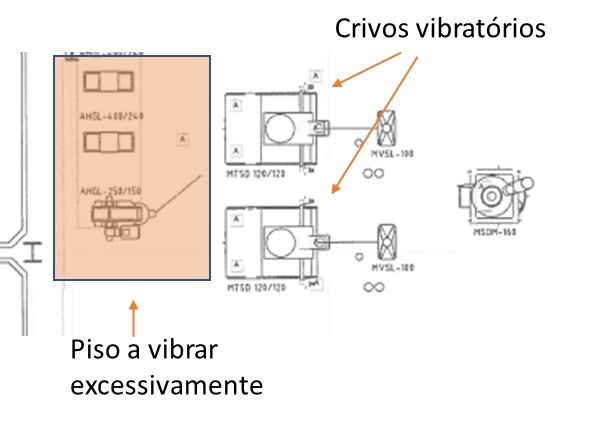
Industrial ground resonance – Floor vibrations
To address the problem, we first proceeded to vibration measurementis, common vibration analyzer, the survey of the form of operational deformation of the floor having obtained the deformation that can be seen below.
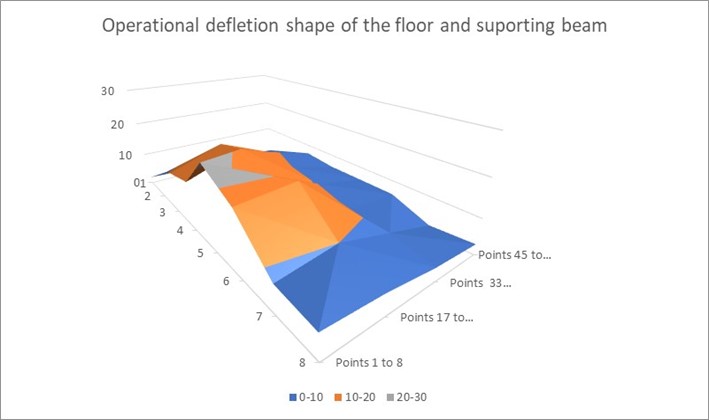
It can be seen that the vibration levels reached 25 mm/s RMS, in the beam between the measuring point 1 e 8, in the vertical direction. The acceptable for this type of structure is 10 mm/s.
The frequency of vibration was the operating frequency of the screens (16,8 Hz).
Floor natural frequency measurement
Suspecting a resonance phenomenon , the natural frequency of the floor was determined, at the point of maximum vibrations, to check if it coincided with the operating frequency of the vibrating screens.
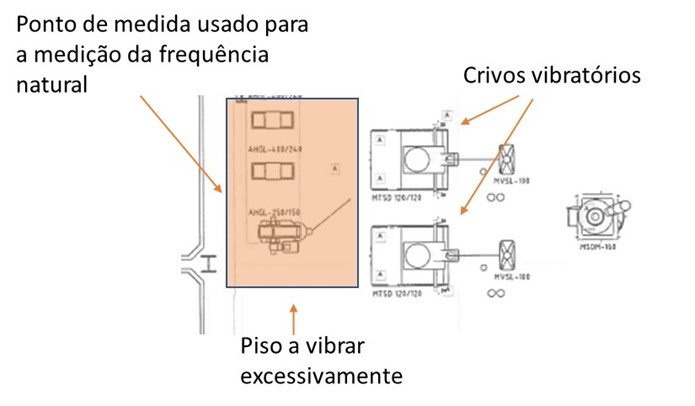
For this purpose, one of those present was asked to take a few jumps in order to excite the floor's natural frequencies, in the vertical direction.
In this test it was determined which natural frequency was 16,1 Hz, as can be seen in the spectrum shown below.
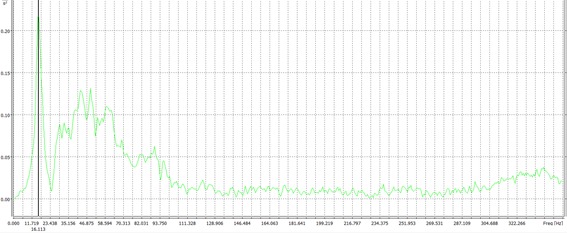
This frequency is very close to the operating frequency of the screens (16,8 Hz)
The solution to the problem
The solution to the problem consisted of, therefore, to change the natural frequency of the floor so that it does not coincide with the operating frequency of the screens. For this, it was considered appropriate to increase the rigidity of the floor support beam in the vertical direction.
Vibration Reduction Solution Testing
To test this resonance solution on industrial ground, additional vertical columns were placed, provisional, to support the horizontal beam supporting the floor in question, as seen in the photo, on the ceiling.
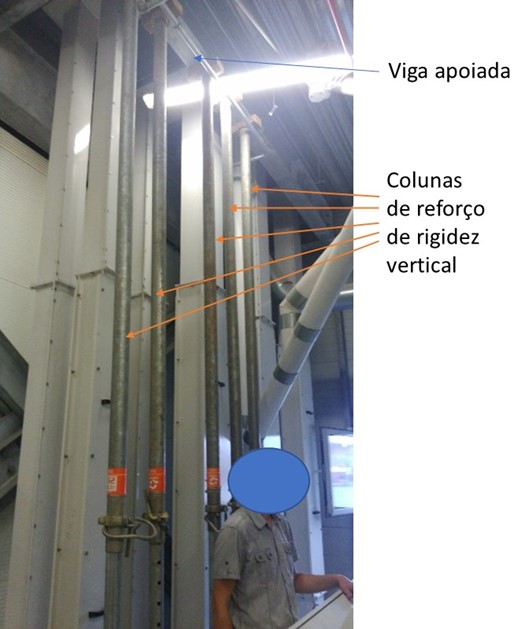
With this temporary solution the vibration level went from 25 for 4,5 mm/s RMS
The natural frequency measured with this booster was 24 Hz.
Conclusion
The structure has been reinforced with permanent columns and the vibration levels have been reduced to acceptable levels.. The industrial ground resonance problem has been solved.


